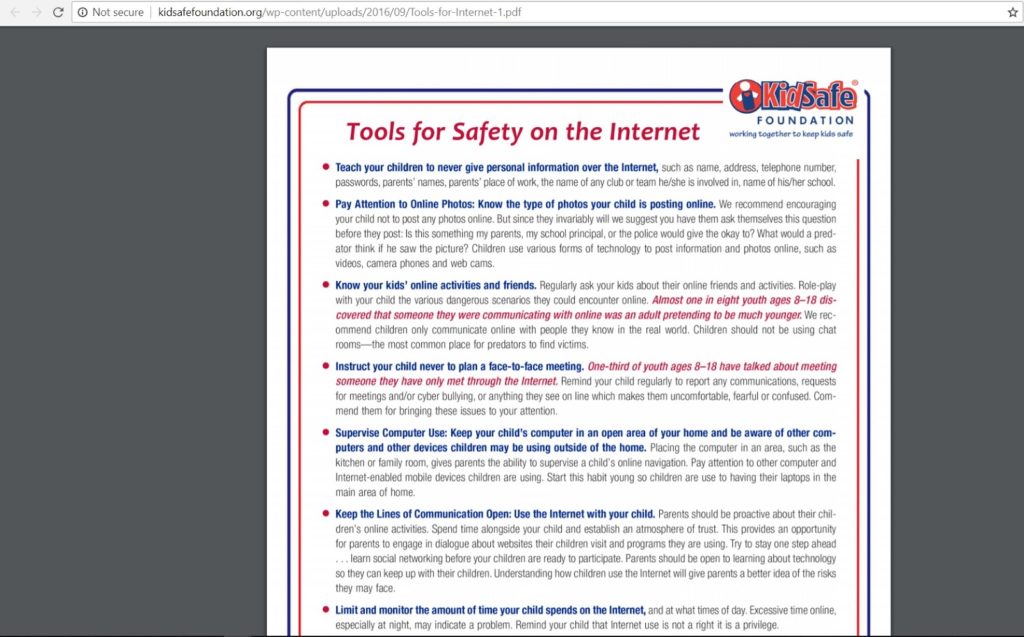Legal Issues
With access to the Internet, ever-expanding resources on the Web, and the profusion of software programs across the world come legal responsibilities for teachers, students, and technology administrators. U.S. law addresses three main areas of concern:
- student safe use
- potential for plagiarism
- fair use
Safe Use
Learners using technology face a variety of risks, particularly on the World Wide Web. The Online Safety Project (2002) notes that:
Statistically, probably the greatest risk is that a child will… encounter people in chat areas and newsgroups who are mean or obnoxious. Another “risk” is that a child will spend a lot of wasted time in areas that aren’t all that productive.
Exposure to inappropriate material, harassment, lack of privacy, and even legal and financial problems can result from using the Internet. Many schools and language programs already have policies in place to avoid such problems. The first step to avoiding these problems is to make sure that learners using computers are supervised. Classes should establish rules for online safety like those at SafeKids.Com (Rules for Online Safety, http://www.safekids.com/; see Figure 9.1), and the consequences of not following the rules should be clear.
Teachers can adapt the Kids’ Pledge (see Family Contract for Online Safety, www.SafeKids.com/) for their classes, and they can discuss it with students. (In language classrooms, instructors might want to add visual elements and provide translated versions to make the pledge easier to understand.) Many schools have posted their rules online and online tips are offered on websites such as http://staysafeonline.org, http://www.scholastic.com, and http://elearningindustry.com. These and other resources can keep teachers and students out of trouble.

Figure 9.1. Some of the rules from SafeKids.com.
Plagiarism
In the United States and many other places, the term plagiarism means to use something that another person has created or owns and claim it as one’s own work. Plagiarism is against the law in the United States, and most schools have policies to deal with it; however, plagiarism is a cultural artifact and learners from cultures where writing and other published works are publicly owned (in other words, anyone may use them and not have to attribute them to the original author) may not easily understand the concept. Therefore, policies for dealing with electronic plagiarism in language classrooms must take into consideration the learner’s belief systems.
With all the materials on the Web and special sites where learners can go to download pre-written essays, plagiarism in schools seems to be increasing. Harris (2002) provides clear steps to teachers for avoiding plagiarism and addressing the issue in classrooms before it happens. However, if plagiarism does occur, the Dead Giveaways slides (http://ciese.org/cyberteacher/v2/slides/hs_week6/tsld018.htm/) suggests how to spot it. If you suspect that all or part of a students’ essay may be plagiarized, you can check it using free plagiarism checkers on websites like edubirdie.com, quetext.com, and bibme.org. Students can be taught to use these sites, too.
Fair Use
Copyright law in the United States gives authors or creators ownership of what they create; this includes graphics, text, and video. Violating copyright, or using materials that someone else owns, can be very costly if the owner sues the violator in court. Teachers can use copyrighted materials for their instruction if they follow a set of guidelines called fair use. These guidelines outline what can be used, how much, and for how long, but they can be very difficult to understand. A clear explanation is provided by University of Maryland’s University College (2004). To be safe, teachers and students should use materials marked copyright-free or contact the owner for permission.

Feedback/Errata